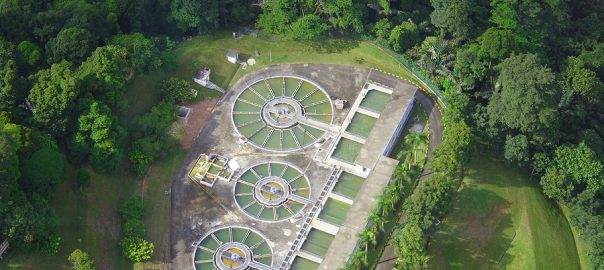
With a new year come new laws and regulations. It also comes with new trends and technological advancements in the world of wastewater treatment. What are some of the improvements and changes in sludge screening that Lakeside Equipment is watching?
Law and Regulation Changes in 2024
In January 2024, the EPA is holding two public hearings on a proposal affecting meat processing plant wastewater. The EPA wants to impose stiffer restrictions on nitrogen limits and establish regulations on phosphorus. Oil and grease filters will be required to remove FOG from processing plant wastewater.
Other limitations on high-salt wastewater and higher levels of E. coli bacteria are also being considered. The goal is to lower the pollutants municipal wastewater treatment plants deal with.
Certain states have their own wastewater regulation changes happening in 2024.
- California – Water agencies are now allowed to recycle wastewater for use as drinking water in schools, homes, and businesses.
- Florida – Florida’s HB 1379 bans the use of a septic system from all but rural homes. Homeowners must connect to the local sewer system or install their own on-site nutrient-reducing water treatment system.
- North Carolina – On-site wastewater rules are changing, and one of the biggest is that the local health department now has some say in any improvement permit or construction project, including septic systems.
How will any of this affect sludge screening? Sludge screens help remove solids from wastewater before it moves to the next process in wastewater treatment. When people consider what they’re flushing, it helps wastewater treatment plants avoid unnecessary clogs and equipment wear and tear.
Changes and Improvements in Technology
Each year brings better technology and improvements in wastewater treatment equipment like sludge screening. With automation, the system can track increased flow rates and adjust motors and pumps as needed. They can increase or decrease the amount of chemicals used after analyzing the current water quality.
Predictive maintenance eliminates sudden breakdowns that take parts of your system down for emergency repairs. Sealed oil within motors and components that are above the water level also makes repairs and maintenance easier than ever.
Here are nine products we offer that provide sludge screening benefits.
Raptor Complete Plant
Grit removal is an important part of wastewater treatment as it keeps items like bone fragments, coffee grounds, and sand from damaging components or clogging lines. A Raptor Complete Plant screens waste through a screw that pushes the dewatered waste through the chute. It also has a grit chamber for grit removal.
Raptor FalconRake Bar Screen
The FalconRake Bar Screen resembles a ladder. As wastewater enters the chamber, the steps of the bar screen capture solids and travel to the top of the ladder where they are deposited over the side. The bars then go back down to repeat the process. As this sludge screening equipment is vertical, it doesn’t require a lot of space. It’s ideal for fast removal of debris and high amounts of sludge.
Raptor Fine Screen
The bottom of the fine screen is a basket that spins in the wastewater collecting debris and sludge, while dewatering and compacting the waste matter in one system. Sludge travels up a chute to the collection bin. It uses a dual spray wash system to ensure organic matter remains in the wastewater flow, and rake teeth clean the screens to prevent jams and clogs.
Raptor Micro Strainer
The Raptor Micro Strainer is a system with a screw that screens, washes, compacts, and dewaters sludge and solids in one smaller system, which makes it a good choice for smaller facilities. As wastewater flows into the chamber, it draws sludge up the screw and is screened.
A spray wash system keeps organic matter in the wastewater flow. Wastewater presses out of it, and the solids and sludge continue up the transport tube to a bin where it can become compost, head to incinerators, or go to a landfill.
Raptor Multi-Rake Bar Screen
The Raptor Multi-Rake Bar Screen is a vertical sludge screening rake that captures waste in the rake bars, brings them to the top for depositing into a container, and returns to get more. It’s a low-maintenance sludge screening option with rake teeth to help clean each bar while it’s in use.
Raptor Rotating Drum Screen
In districts where the amount of sludge is high, a rotating drum screen is helpful. A large basket sits in the bottom of the tank and captures sludge in screens that range in size from 0.02 to 0.25 inches. Like other systems, the sludge is compacted, dewatered, and pushed up the chute to a bin for composting, incinerating, or hauling to a landfill. It can reduce volumes by 50% and the weight of sludge by as much as 67%, which saves money.
Raptor Rotary Strainer Screen
Wastewater flows into a tank where there’s a rotating screen with mesh ranging from 0.01 to 0.1 inches. The cylinder sits horizontally and captures sludge while ensuring wastewater continues to the next steps through the opening below the screens. The blade assembly automatically cleans itself as waste leaves the chute and travels to a collection bin on the opposite side of the influent area.
Raptor Septage Acceptance Plant
For wastewater districts that take septage from residential septic systems, the process of pumping septage from trucks, screening, washing, dewatering, and removing sludge at once is essential. A septage acceptance plant does that. Our system can accept two trucks to empty their loads at the same time.
Raptor Septage Complete Plant
In areas where the amount of fats, oils, and grease are high, such as a community where restaurants aren’t on sewer lines, our Septage Complete Plant is designed to handle high levels of sludge, leachate, FOG, and industrial waste. While screening sludge, it also handles grit removal.
Planning for Weather-Related Hurdles
If the past year showed anything, it’s that there is an incredible need to be proactive and plan for the unexpected. Historic flooding hit Vermont not once but twice, and one of those flooding events hit in December when snow is more likely. Instead, over a dozen of the state’s wastewater treatment plants dealt with sewage overflows. Flow rates were up to eight times more than normal because of days of rain.
Vermont is just one of many states where some wastewater treatment plants are still connected to storm drains. When rain hits, it flows into storm drains and straight into sewers where it floods treatment plants and strains the infrastructure. Adjusting for these flow rate increases is important, but you also need screens that can handle the increase.
When did you last have your system assessed? If your equipment is decades old, it’s time to analyze your facility’s current flow rates, what happens when there is heavy snow or rain, and how you can make improvements that ensure your system isn’t overwhelmed.
Talk to Lakeside Equipment’s experts about the latest technology in sludge screening. Our water treatment business is getting close to 100 years in business, and we are experts in the effects of changing weather patterns, the most cost-effective upgrades, and energy-efficiency measures that end up covering the cost of the upgrades you choose. Reach us online or send an email to let us know how we can help your wastewater treatment facility become more efficient and effective.





